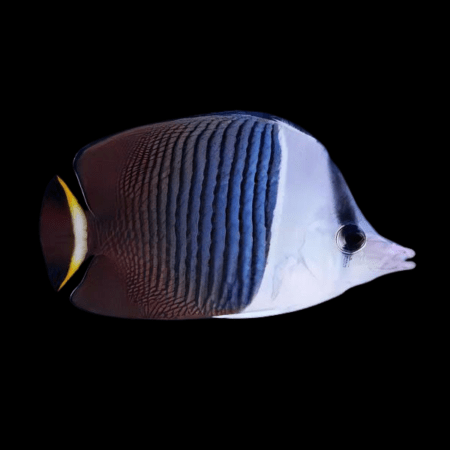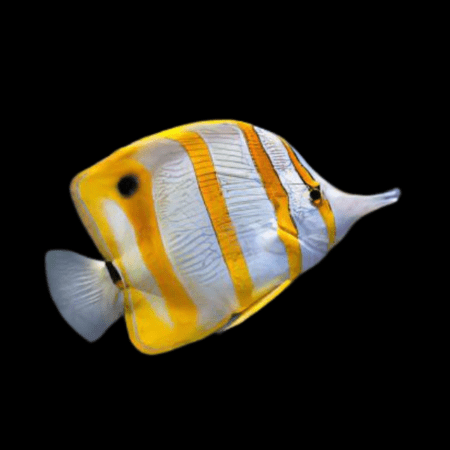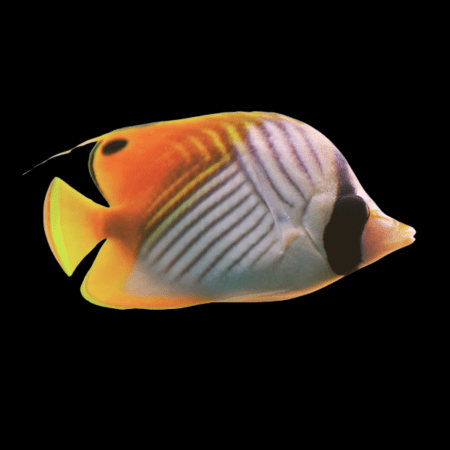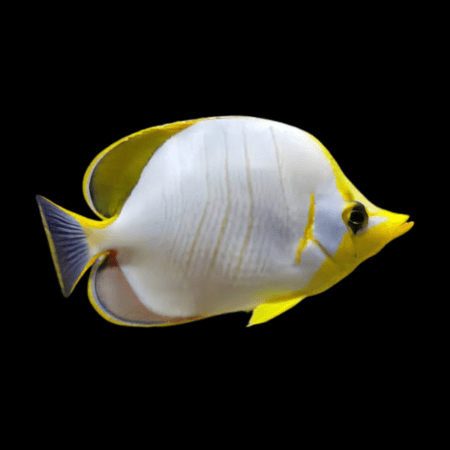Description
Double Saddleback Butterfly Fish Chaetodon Ulientensis
Overview:
The Double Saddleback Butterflyfish, also known as Chaetodon ulietensis, captivates with its vivid coloration and distinct markings. This species showcases a stunning blend of yellow, white, and black hues, characterized by two saddle-like patches and a ‘chevron’ pattern near the tail. Growing up to about 6 inches in length, these fish add a splash of elegance and vibrancy to any aquarium.
Origin:
Native to the Indo-Pacific region, the Double Saddleback Butterflyfish thrives in reef environments, often found from the eastern coast of Africa to the central Pacific Ocean. They are typically encountered in shallow lagoons and on outer reefs, where coral growth is abundant.
Feeding:
In the wild, Chaetodon ulietensis predominantly feeds on coral polyps, small invertebrates, and algae. In captivity, they require a varied diet consisting of marine flakes, frozen or live foods such as mysis shrimp and brine shrimp, and vegetable-based foods to maintain optimal health. It’s crucial to introduce a diversity of foods to ensure their dietary needs are met.
Tank Mates:
While generally peaceful towards other species, the Double Saddleback Butterflyfish can be territorial with its kind or similar looking butterflyfish. Suitable tank mates include larger, peaceful fish and other reef-dwellers that do not compete directly for food. It’s advisable to avoid housing them with aggressive species that might stress or harm them.
Aggression:
This species exhibits a low level of aggression but can become territorial towards other butterflyfish, especially in smaller tanks. Providing ample space and hiding spots can minimize territorial disputes.
Experience Level:
Due to their specific dietary and environmental needs, the Double Saddleback Butterflyfish is recommended for intermediate to advanced aquarists. Ensuring a well-maintained tank that mimics their natural habitat is key to their wellbeing.
Water Parameters:
To thrive, these fish require stable water conditions with temperatures ranging from 72°F to 78°F (22°C to 26°C), pH levels between 8.1 and 8.4, and specific gravity of 1.020-1.025. Regular water changes and monitoring of water quality are essential to prevent stress and disease.




